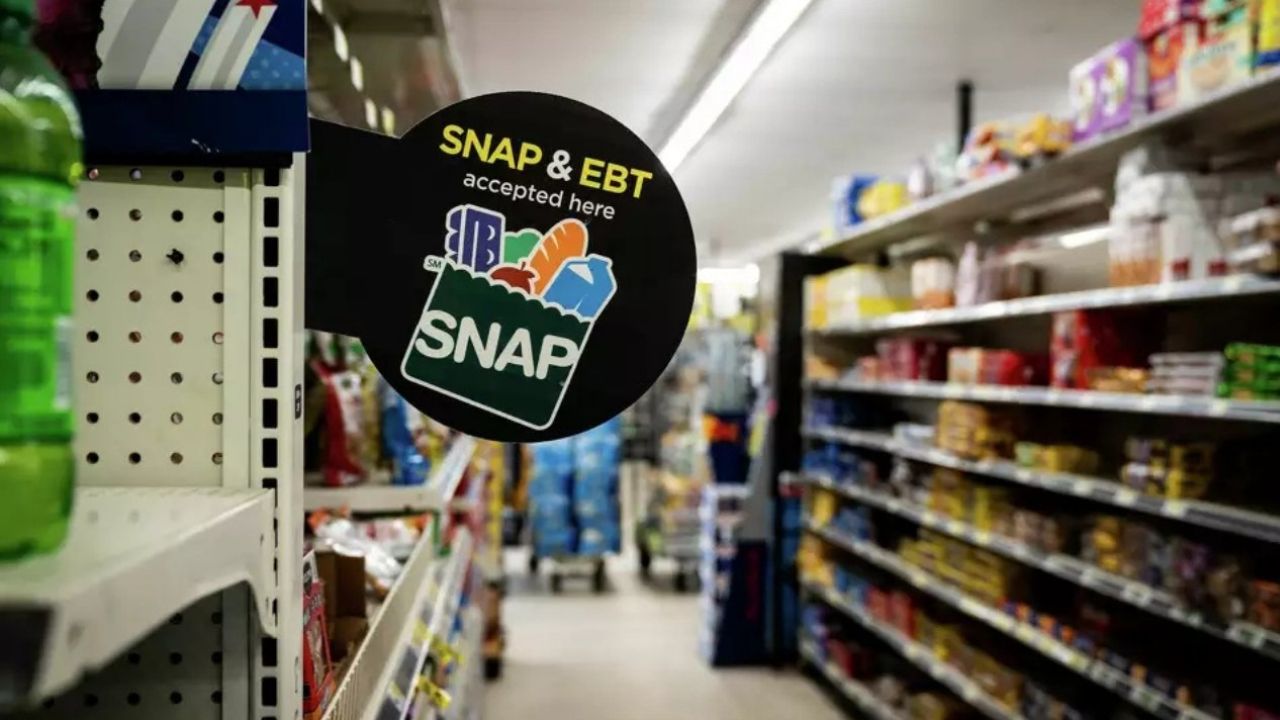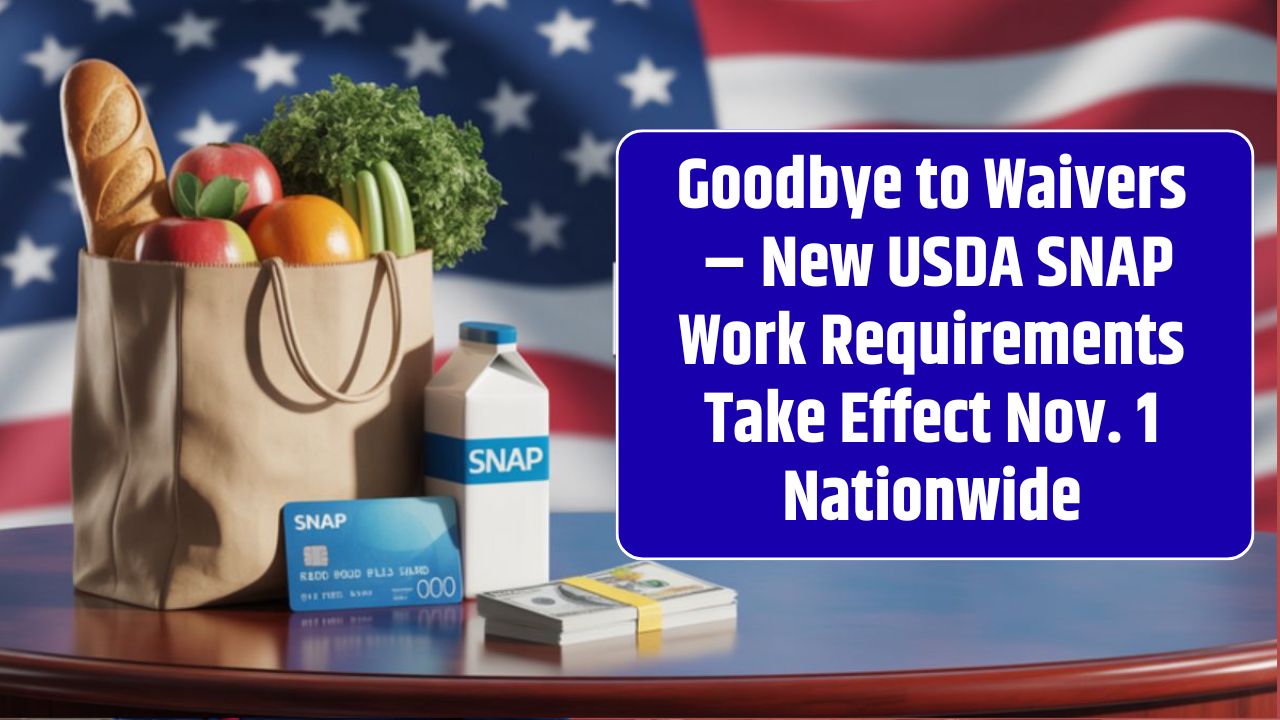Starting November 1, 2025, a major shift hits the nation’s food assistance system—one that could change how millions of low-income Americans keep food on the table. The U.S. Department of Agriculture (USDA) is rolling out new, stricter SNAP work requirements for a category of recipients known as able-bodied adults without dependents (ABAWDs).
For the first time in years, states will be required to apply uniform national enforcement, meaning far fewer waivers and exemptions—and a lot more scrutiny over who’s working, training, or volunteering enough hours to keep benefits.
The 80-Hour Rule: What’s Really Changing
At its core, the rule isn’t new—but how it’s enforced is. The USDA’s Food and Nutrition Service (FNS) has ordered states to fully implement the long-standing ABAWD time limit: generally, no more than three months of SNAP in any 36-month period unless the person works, trains, or participates in approved activities for at least 80 hours per month.
Up to now, many states sidestepped these limits by using area waivers—essentially suspending the rule in counties or towns with high unemployment. But starting November 1, the USDA says that leeway is over. States must enforce the policy statewide and justify any waiver with detailed economic data.
| Requirement | Before Nov 2025 | After Nov 2025 |
|---|---|---|
| ABAWD time limit | 3 months in 36, often waived | Fully enforced in all states |
| Monthly participation | Varied by state | 80 hours/month (work, training, or service) |
| Geographic waivers | Broad flexibility | Narrow, data-based criteria only |
| Exemptions | Broadly interpreted | Must be documented and tracked |
FNS’ implementation memoranda—issued under the 2025 “H.R. 1/OBBB” federal package—end the transition phase and require states to have all systems, notices, and compliance tracking in place by November 1. Even the “hold harmless” period protecting states from quality control (QC) penalties expires, meaning future errors will again count in federal performance reviews.
For official details, see fns.usda.gov/snap/abawd-time-limit.
Who’s Affected—and Who’s Not
These changes mainly hit adults between roughly 18 and 64 who don’t have dependent children in their household. Anyone not meeting the 80-hour threshold—through work, job training, or verified volunteer hours—risks losing benefits after three months.
Still, not everyone in SNAP falls under this rule. The following groups remain exempt:
- People who are pregnant
- Those medically certified as unfit for work
- Primary caregivers for children or incapacitated adults
- Individuals with approved “good cause” (like illness, homelessness, or lack of transportation)
States also retain a limited pool of discretionary exemptions, which can extend eligibility case by case.
Why the November 1 Deadline Matters
The date isn’t arbitrary. It marks the end of a yearlong transition that gave states time to align with the updated federal law. By November 1, every state must:
- Flag ABAWDs in their eligibility systems
- Track monthly work/training hours
- Apply exemptions consistently
- Generate accurate notices and fair-hearing materials
And there’s a new accountability twist: the USDA will once again count ABAWD-related errors in federal Quality Control metrics. In short, states can no longer delay or loosely interpret the rules without consequences.
The Complicating Factor: Possible SNAP Delays
As if the new work rules weren’t enough, another issue looms—money. Several states are warning that November SNAP benefits could be delayed if the federal funding lapse (government shutdown) continues. Officials in Pennsylvania, Minnesota, and others have said they can’t schedule November payments without congressional action, and USDA officials have reportedly confirmed that available funds may not cover the full month if the shutdown drags on.
That means some recipients could face temporary benefit interruptions just as the new enforcement begins—an administrative storm that could sow confusion at food banks and state call centers alike.
What Households Need to Do
For anyone now subject to the ABAWD time limit, the November shift is a signal to get proactive.
If you’re an ABAWD:
- Document your hours. Whether it’s paid work, an approved training course, or verified volunteering, log at least 80 hours a month.
- Stay in touch with your caseworker. Report changes promptly—especially health issues, caregiving responsibilities, or other potential exemptions.
- Ask about good-cause provisions. States must consider circumstances like illness, lack of transport, or job search difficulties.
| Category | Requirement | Example |
|---|---|---|
| Work | Paid employment | Part-time job totaling 20 hrs/week |
| Training | Approved job or skills program | Workforce Innovation & Opportunity Act (WIOA) training |
| Volunteer/Service | Documented public service | Food pantry or community center hours |
If you believe you qualify for an exemption, make sure your case file includes medical or caregiving documentation before the November reviews.
What States Must Handle
For administrators, this transition is equally daunting. State systems must now:
- Identify ABAWDs accurately
- Calculate and track each individual’s 3-in-36-month limit
- Merge data from job training, volunteer, and employment programs
- Generate timely notices and manage appeals
- Maintain lower error rates to avoid federal QC penalties
States must also tighten oversight of area waiver requests, which now require strict labor-market data and FNS approval. The USDA has made it clear: blanket county waivers are history.
The Policy Debate
The politics of SNAP work requirements haven’t changed much—but the intensity has. Proponents argue that linking benefits to work encourages self-sufficiency and prevents long-term dependency. They say it maintains the integrity of a program designed as temporary aid, not permanent support.
Critics, meanwhile, see it as a bureaucratic overreach that punishes the poor for circumstances beyond their control. They point to structural issues—transportation deserts, unpredictable schedules, health conditions, and limited training slots—that can make “80 hours a month” an impossible target for some.
“Work requirements look good on paper,” said one anti-hunger advocate in Ohio, “but if there’s no bus, no childcare, and no open shifts, you’re not building self-reliance—you’re cutting off dinner.”
Key Dates to Watch
| Date | Event |
|---|---|
| October 2025 | Final USDA implementation memos issued; states finalize ABAWD systems |
| November 1, 2025 | Transition period ends; full enforcement of updated ABAWD rules begins |
| November 2025 | Possible benefit delays if federal funding lapse continues |
FAQs:
When do the new SNAP work rules take effect?
States must fully enforce the updated ABAWD framework beginning November 1, 2025.
How many hours must recipients work or train?
At least 80 hours per month, through work, training, or verified volunteer service.
Who is exempt from these requirements?
People who are pregnant, medically unfit for work, primary caregivers, or otherwise approved for good cause.













